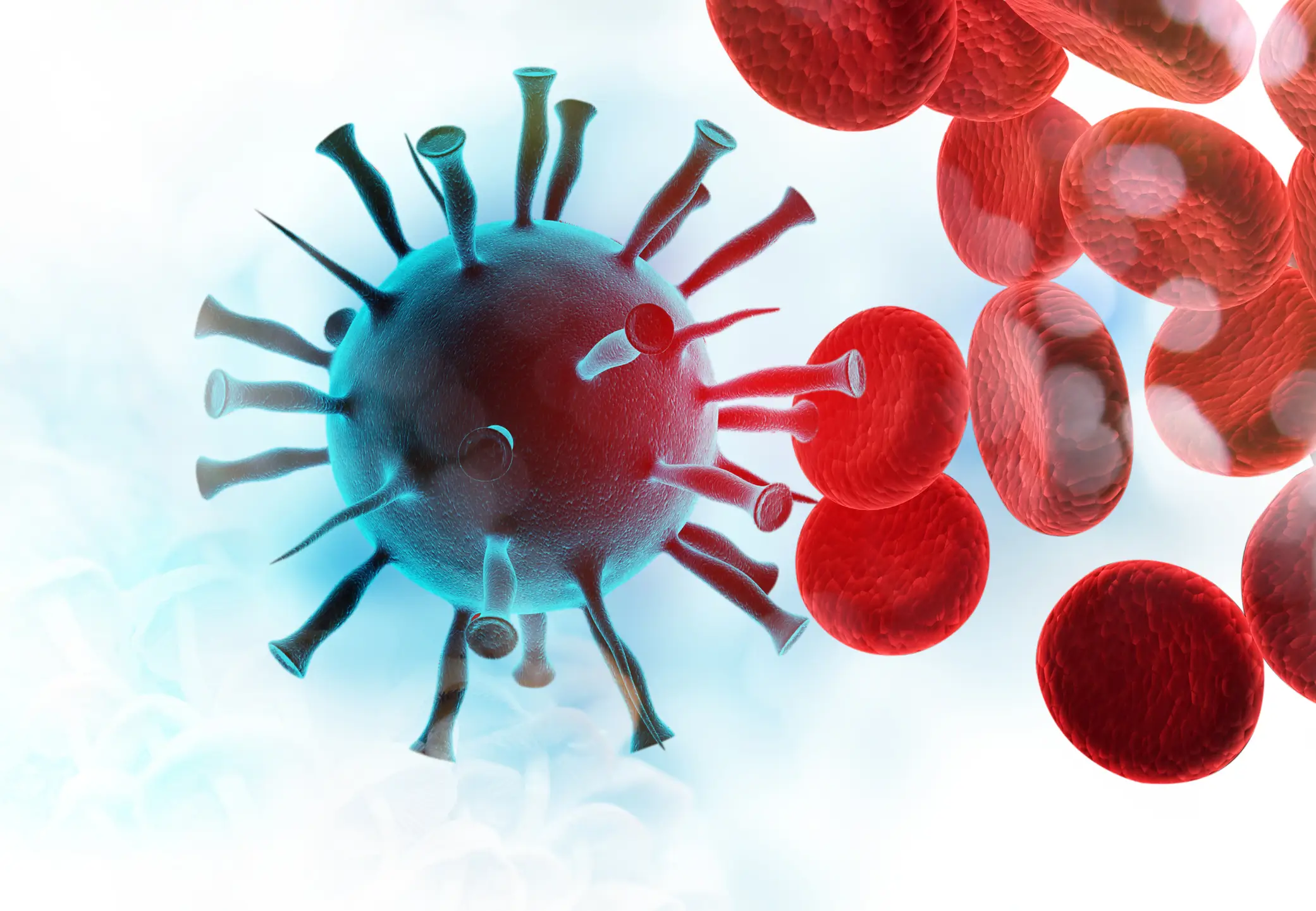According to an Occupational Safety and Health Administration (OSHA) report, around 3 million healthcare workers (HCWs) experience exposure to bloodborne viruses (BBVs) each year. This vast exposure results in a yearly estimation of 16,000 hepatitis C, 66,000 hepatitis B, and 200 to 5000 human immunodeficiency virus (HIV) infections. Most low-income countries show an increased rate of up to 90% spread of the infection. Many preventative measures have been implemented in highly developed countries considering the risk of infections. This blog will cover all about Bloodborne Pathogens, how they affect, and what measures one needs to follow. Read on:
What are Bloodborne Pathogens?
Commonly known as BBP – Bloodborne Pathogens are microorganisms found in human blood can cause life-threatening diseases. They pose a severe risk to doctors and other healthcare workers if they come in contact with the blood tissues, bodily fluids (semen, or vaginal) saliva, or even the serious fluids (pleural, pericardial, peritoneal, and amniotic) of the patient. The blood of a patient's body gets fully contaminated and causes transmission of disease.
Percutaneous injuries from needles and other sharp objects become a common source to get bloodborne pathogen infections in workplaces. Exposures through abrasions, human bites, and accidental punctures can also result in infections.
The most common bloodborne pathogen infections are Hepatitis C (HCV) Hepatitis B (HBV), and Human Immunodeficiency Virus (HIV). The risk of severity of the infections also depends on the kind of exposure the patient has experienced. The duration of exposure also plays a role in causing mild to severe effects on the patients.
In the United Estates, there have been 400,000 cases of Bloodborne Pathogens infections. The widespread increase in such cases has encouraged employers and healthcare professionals to guide people about Bloodborne Pathogens training and to stay mindful of the possible symptoms. Let’s explore more about it.
How Bloodborne Pathogens Spread?
Bloodborne Pathogens likely get transmitted in several ways:
- Direct Blood Contact
- Needle Stick Injuries
- Sexual Contact
- Mother-to-Child Transmission
- Blood Transfusions or Organ Transplants
But how does it spread into the human body? It enters the bloodstream of the person. Entering through open wounds or mucous membranes, it makes its way into the bloodstream where it targets the organs and cells. Each pathogen targets a specific cell. For instance, HIV attacks the immune system which is the CD4 cell. Whereas, other hepatitis viruses infect organs like the liver. These viruses replicate themselves at a fast speed that helps them to spread deeper into the body rapidly. The pathogen uses the host’s cells to replicate. It hijacks the cellular machinery to create copies of itself where each virus plays an individual role in attacking cells and organs.
What Are The Effects Of Bloodborne Pathogens Infections?
Bloodborne pathogens (BBPs) such as HIV, Hepatitis B (HBV), and Hepatitis C (HCV) can cause serious and long-lasting effects once they infect the body.
-
Hepatitis B Virus (HBV)
Hepatitis B virus targets the liver. It's capable of causing long-term, acute infections. The virus transmits through the bloodstream and directly affects the liver. It first weakens the immune system of the infected person. The virus has the ability to stay stable in the environment and can remain infectious for more than seven days on any surface. It's one of the global healthcare concerns and an important subject in the Occupational Safety and Health Administration regulations due to its severity.
-
Hepatitis C Virus (HCV)
Hepatitis C is commonly transmitted through sharing needles or drug injections. It affects the human liver actively. Around 70% to 80% of affected patients have experienced chronic symptoms. The virus may not show itself prominently during the beginning, but it slowly damages the liver and over the years it breaks down the functionality, damaging immunity as well. Chronic HCV causes liver inflammation that leads to scarring (fibrosis) over time. It develops into cirrhosis, a severe liver condition characterized by extensive scarring that impairs liver function. Another potential outcome is Liver cancer which has a higher rate of fatalities.
-
Human Immunodeficiency Virus (HIV)
The most common ways a person can get affected by Human Immunodeficiency Virus (HIV) is through unprotected sexual contact, sharing needles, mother-to-child transmission, and blood transfusion. There are two stages of the infection Acute to Chronic. Acute HIV infection occurs within 2 to 4 weeks of a person getting infected. It is referred to as the Primary stage. Whereas, chronic infection is also known as clinical latency. During this stage the virus remains active but at a lower level. At this stage, the patient experiences severe immunity problems. The last stage is AIDS (Acquired Immunodeficiency Syndrome) where HIV affects the CD4 cells that lower the count. It drastically reduces the cell count.
The Common Symptoms of Bloodborne Pathogens Infections
To help you early detect the virus here is a list of common symptoms of blood-borne diseases you must check:
- Fever
- Fatigue
- Body aches
- Sore throat
- Chills
- Muscle or joint pain
- Jaundice
- Yellowing of the skin and eyes due to liver dysfunction.
- Dark urine or pale stools
- Nausea and Vomiting
- Abdominal Pain
- Chronic Fatigue
- Unexplained Weight Loss
- Joint Pain
How To Protect Yourself From Bloodborne Pathogens Transmission
By following the OSHA Bloodborne Pathogens Standards and regulations you can keep yourself protected from catching Bloodborne Pathogens infections. OSHA proposes practical and safe-to-follow precautions and policies for both organizations and employees that keep deadly bloodborne pathogens (BBPs) away from the workplace. Here's what you must do and follow:
-
Regulating Workplace Safety:
The first step is to ensure that every workplace is fully secured and free from the virus. Organizations need to eliminate exposure to blood and other potentially infectious materials. It is critical in construction industries where there are many different materials and tools that can cause injuries.
-
Exposure Control Plan:
The ECP helps guide the employees about the possible hazards and ways they can get exposed to the infection. It helps identify tasks, actions, and jobs that can make the employees exposed to harmful viruses.
-
Use of Personal Protective Equipment (PPE):
OSHA mandates employees to stay covered using PPE such as gloves, masks, eye protection, coats, and boots. Every employee should have the necessary gear to avoid getting in contact with these viruses. You can have face shields and sanitizers. In case your clothes get contaminated, take it off instantly and wash your body thoroughly with anti-allergic soaps.
-
Training and Education
The most important step that every organization needs to do is to help train their workforce to stay vigilant about such viruses. They need to teach and guide them about necessary precautions and ways to handle situations in case they come in contact with the BBP virus. They should be able to detect it early through medical examinations and stay careful about all symptoms.
This is only possible through OSHA online training programs where you get to study at your own pace. You can be flexible and have complete transparency about the course content. You can check the study guide, videos, tutorials, and all sorts of resources that can help you learn faster and with better efficiency.
Conclusion
Bloodborne pathogens such as HIV, Hepatitis B, and Hepatitis C pose significant health risks, particularly in environments where exposure to blood or bodily fluids is common. They can cause chronic infections and are extremely contagious. Early detection, vaccinations (like for Hepatitis B), and proper treatment are also essential for reducing the impact of these infections. By prioritizing education, preventive strategies, and following safety guidelines, we can significantly minimize the risk of bloodborne infections and protect both individuals and communities.





